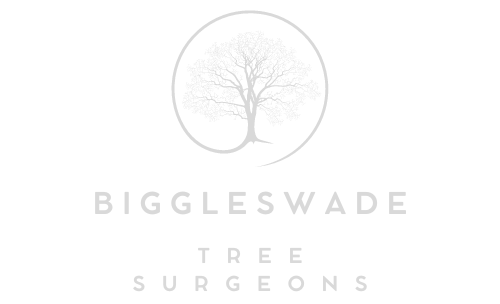How Sectional Dismantling Reduces Impact on Nearby Plants and Gardens
Tree removal is often a necessary task, particularly when a tree becomes unsafe or diseased. However, traditional tree felling can cause significant disruption to surrounding landscapes, including damage to nearby plants, flowerbeds, and gardens. For homeowners who wish to preserve the beauty of their outdoor spaces while ensuring the safe removal of trees, sectional dismantling offers a highly effective solution. At Biggleswade Tree Surgeons, we specialise in this precise and controlled method of tree removal, minimising the impact on nearby plants and gardens. In this blog, we’ll explore how sectional dismantling works and why it is the preferred choice for reducing the impact on your landscape.
What is Sectional Dismantling?
Sectional dismantling, also known as controlled tree felling, involves taking down a tree in small, manageable sections rather than cutting it down in one go. This process is particularly useful in areas where space is limited or when the tree is in close proximity to buildings, fences, or other landscaping features. Each section of the tree is carefully cut and lowered to the ground using ropes, ensuring that surrounding areas are not damaged by falling branches or debris.
The Benefits of Sectional Dismantling for Gardens and Plants
- Minimising Physical Damage
One of the primary advantages of sectional dismantling is that it allows for precise control over how the tree is removed, significantly reducing the risk of damage to surrounding plants and gardens. Large branches or tree trunks are not allowed to fall freely, which means that flowerbeds, shrubs, and other delicate features remain undisturbed. This method is ideal for gardens where trees are located near carefully maintained landscaping, ensuring that the removal process is as non-invasive as possible.
- Protecting Soil and Root Structures
Traditional tree felling can sometimes cause soil compaction or disturb the root systems of nearby plants. Heavy machinery or large falling branches may disrupt the soil, making it more difficult for plants to thrive after the tree is removed. With sectional dismantling, the tree is taken down in small pieces, reducing the need for heavy equipment and minimising ground disturbance. This careful approach helps to protect the health of the surrounding garden, ensuring that plants can continue to grow without interruption.
- Preserving Garden Layout and Design
For homeowners who have invested time and effort into designing their gardens, maintaining the layout is a top priority during tree removal. Sectional dismantling allows tree surgeons to work within the constraints of the garden’s design, ensuring that pathways, flowerbeds, and other features remain intact. By using ropes and pulleys to lower sections of the tree, we can safely guide the debris away from vulnerable areas, preserving the overall aesthetic and structure of your garden.
- Reducing Noise and Disruption
Another benefit of sectional dismantling is that it tends to be less disruptive than traditional felling methods. The process is carried out with precision, often with the use of quieter equipment such as handsaws and ropes, which means less noise pollution for your home and neighbourhood. This is particularly important in residential areas or places where noise control is a concern.
- Enhancing Safety
Safety is a key consideration during any tree removal process, particularly when nearby structures or landscaping elements are involved. Sectional dismantling ensures that tree surgeons have full control over each part of the tree as it is removed, significantly reducing the risk of accidental damage or injury. By lowering sections of the tree with ropes, the process is safer for both workers and the surrounding environment, making it a reliable choice for complex or confined spaces.
When Should Sectional Dismantling Be Used?
Sectional dismantling is especially useful in the following scenarios:
- Confined spaces: When a tree is located in a small garden or near buildings, sectional dismantling allows for safe removal without the risk of damaging surrounding structures.
- Near delicate landscaping: For homeowners with intricate flowerbeds, shrubs, or plants near the tree, sectional dismantling ensures that the removal process does not harm the garden’s design or plant health.
- Tight urban environments: In areas with limited space, such as urban properties or small back gardens, sectional dismantling is the safest and most effective method of tree removal.
Conclusion
Sectional dismantling is an invaluable technique for safely and efficiently removing trees while protecting the surrounding landscape. By taking a controlled and careful approach, this method ensures that your garden remains intact and undisturbed, allowing your plants and flowerbeds to thrive even after the tree has been removed. At Biggleswade Tree Surgeons, we specialise in sectional dismantling services designed to reduce the impact on your outdoor space. Contact us today to learn more about how we can help with your tree removal needs in Biggleswade, Bedfordshire.
Call us on: 01767 660 596
Click here to find out more about Biggleswade Tree Surgeons
Click here to complete our contact form and see how we can help with your tree needs.

